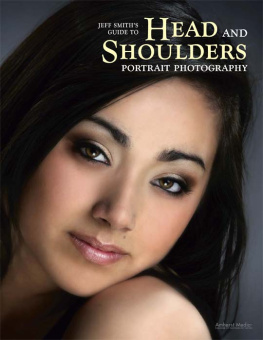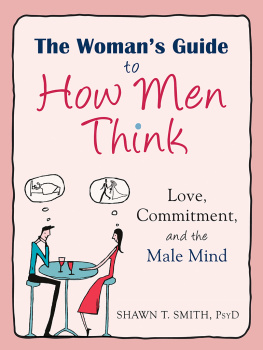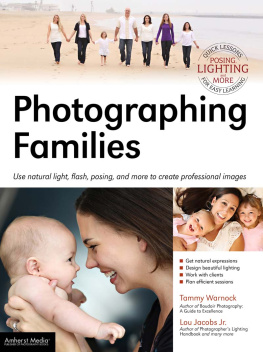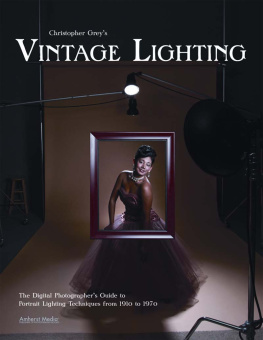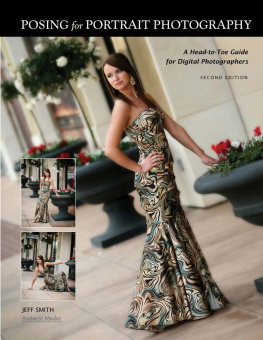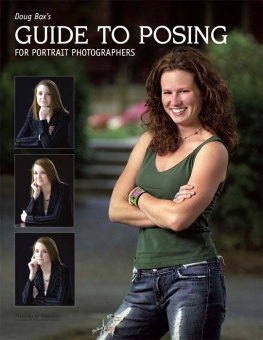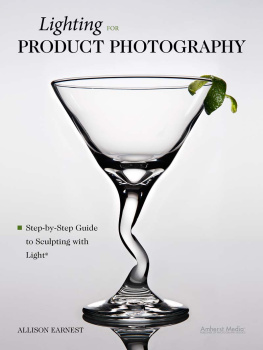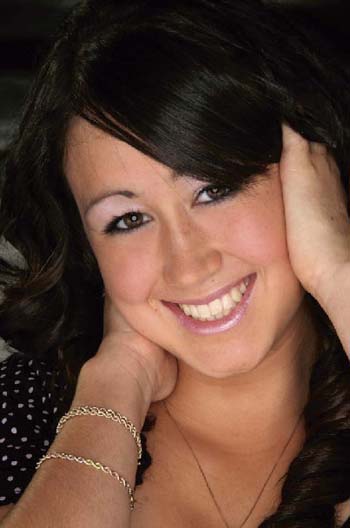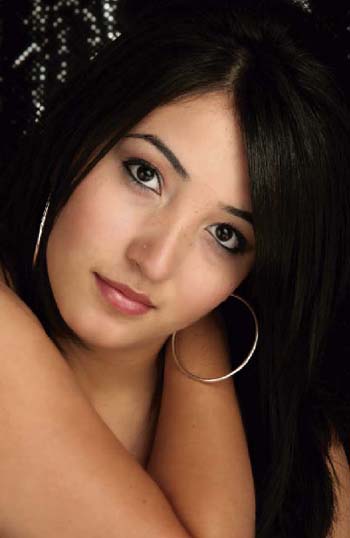Copyright 2009 by Jeff Smith.
All rights reserved.
Published by:
Amherst Media, Inc.
P.O. Box 586
Buffalo, N.Y. 14226
Fax: 716-874-4508
www.AmherstMedia.com
Publisher: Craig Alesse
Senior Editor/Production Manager: Michelle Perkins
Assistant Editor: Barbara A. Lynch-Johnt
Editorial Assistance from: John S. Loder, Carey A. Maines, C. A. Schweizer
ISBN-13: 978-1-58428-256-3
Library of Congress Control Number: 2008942241
Printed in Korea.
10 9 8 7 6 5 4 3 2 1
No part of this publication may be reproduced, stored, or transmitted in any form or by any means, electronic, mechanical, photocopied, recorded or otherwise, without prior written consent from the publisher.
Notice of Disclaimer: The information contained in this book is based on the authors experience and opinions. The author and publisher will not be held liable for the use or misuse of the information in this book.
Introduction
Why Head and Shoulders Portraits Sell
T his is the tenth book I have written, and I think it is one of the most important for the majority of photographers. Almost 70 percent of the sales in my studio (and this is the case with many others photographers I have talked to) are generated from head and shoulders portraits. Yet, while this one type of portrait often makes up the bulk of the income for a studio, many photographers look at head and shoulders portraits as the portraits that have to be done for the mothers, grandmothers, yearbooks, and business cardsthe portraits they have to get out of the way so they can get to the more exciting full-length poses.
In the senior-portrait market, the full-length pose is often looked at as the way to set your self apart from the contracted studio that typically doesnt offer this type of image. Yet, while we offer everything to every client, the most requested portraits are the close-up shots that we will be discussing shortly, not the full-length poses. And as the average size of our clients seems to keep getting larger, I cant imagine this is a trend that is going to change. A tight close-up of the face can be a lot easier on the ego than a full-length image.
Keep in mind, I look at a head and shoulders image as an image with a larger facial size that is cropped somewhere above the waistline (at least in most cases). You will find that, in dealing with your clients, the facial size is much more important in most images than exactly where the portrait is cropped. As youll see, I often pose a subject for a full or three-quarter length pose that can also be composed as a beautiful close-up. Looser framing for a yearbook or business portrait (slightly above the waist) also gives me cropping options that framing at the top of the shoulders does not.
In the upcoming chapters, we are going to look at each aspect of designing a head and shoulders portrait that not only looks beautiful but pleases your clients. That is the key to success in photographywhatever kind of portrait you specialize in creating.
1. Creating Portraits by Design
Its About Them, Not You
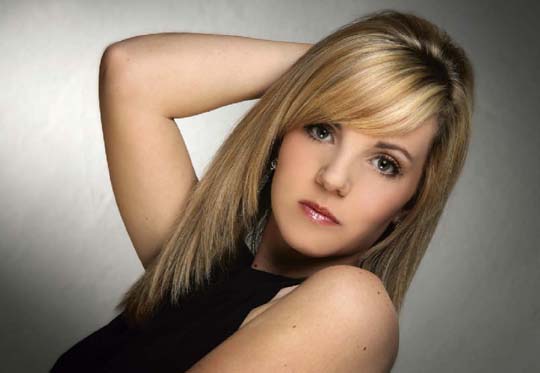
Success in portrait photography is about delivering what your clients want.
To design an effective, salable portrait you must understand many factors and make many decisions. The first and most important consideration is one that many young photographers completely overlookand its why so many of them never make it to be an old photographer like me. The most important consideration in designing a portrait is the person you are designing the portrait for. If you dont understand precisely what their expectations of the portrait are, youll never be able to meet those expectations.
Judging by the e-mails I receive, this approachmy philosophy of putting business decisions (like pleasing the client) above the personal artistic choices that I might otherwise makecauses concern among some younger photographers and photography teachers. Many of these younger photographers remind me of when my high-school-age son commented that he was going to own his own business because he didnt want a boss telling him what to do all the time. I explained to him that, to be a successful businessperson and own a company, you dont just have one person telling you what to do, you have every person walking through your door telling you what to do. If you are going to keep your business running, you had better listen and make it your highest priority to give each client what they truly want.
Its not about us, its about them. If you have a hard time with that concept, I can guarantee that you will find it nearly impossible to be successful in this profession. The ideas I present here are taken from a successful working studio that has been in business for over twenty-three years. That said, all any photographer (myself included) really knows is what is working for his or her clients in the area they work in. So I encourage you to test these ideas; use the ideas that work and throw out those that dont.
Meeting Your Clients Needs and Desires
What does the client expect and why is he or she having the portrait done? When someone hires you to take a portrait there is a need, and that need has created a desire. Without a need and a desire, a person will not call your studio. Once they do call, if you cannot meet that need and fulfill the clients desires, you will not be a successful professional photographer. While some photographers take the time to talk with a client and understand what they desire and what need the portrait will be fulfilling, many simply meet the client in the camera room and go through that photographers favorite ten poses. If that doesnt make the client happy, it must mean that they were a difficult client! What has actually happened, however, is a failure of communication that leaves neither party happy; the client doesnt like their images and the photographer doesnt like their sales figures.
Lets look into the day of a photographer who doesnt concern himself with the needs and desires of his clients. The doors of the studio open and the first session is an attractive woman in her thirties. She says she is there for a head shot and has a variety of clothing for the photographer to look at. He figures that a woman this age who comes in for a head shot with a variety of blazers, probably needs a business portrait. The client doesnt seem thrilled with the shoot, but the photographer assumes she is just a reserved person. Thirty minutes later he is done and the woman is on her way to the viewing room.
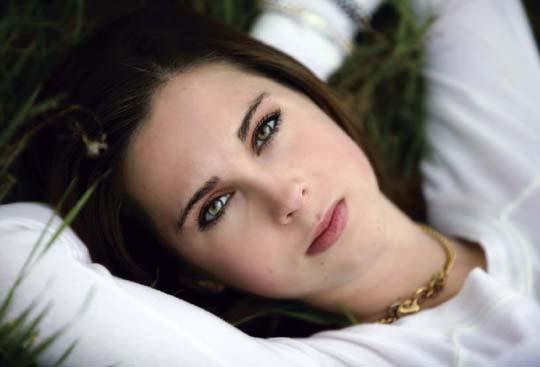
If you want to please your clientsand make a living in this businesyou have to start with the end in mind.
The next session is ushered into the camera room. Shes a stunning twenty-two-year-old girl. She tells the photographer that she wants a photo from the waist up and she also has a variety of clothing. The photographer notices that most of her outfits consist of low cut tops and short skirts. Noting that she is a shapely woman, he assumes that she is doing photographs for a love interest and selects the clothing accordingly. Since she is just so cute (and so much of her was showing), he decides to take some extra photos for his sample books. He runs over the sessions scheduled time but feels it was worth it, because now he can put new samples in his books and maybe a new sample on the wall.

